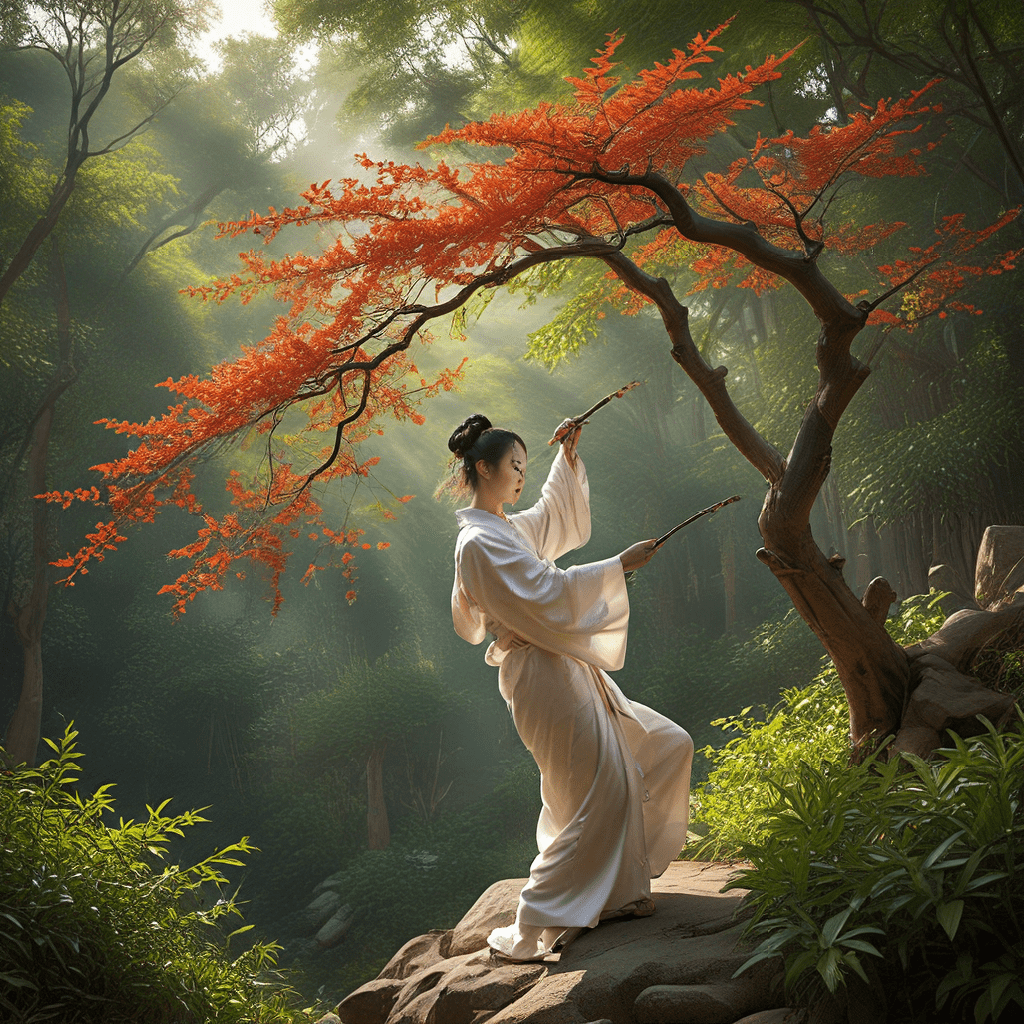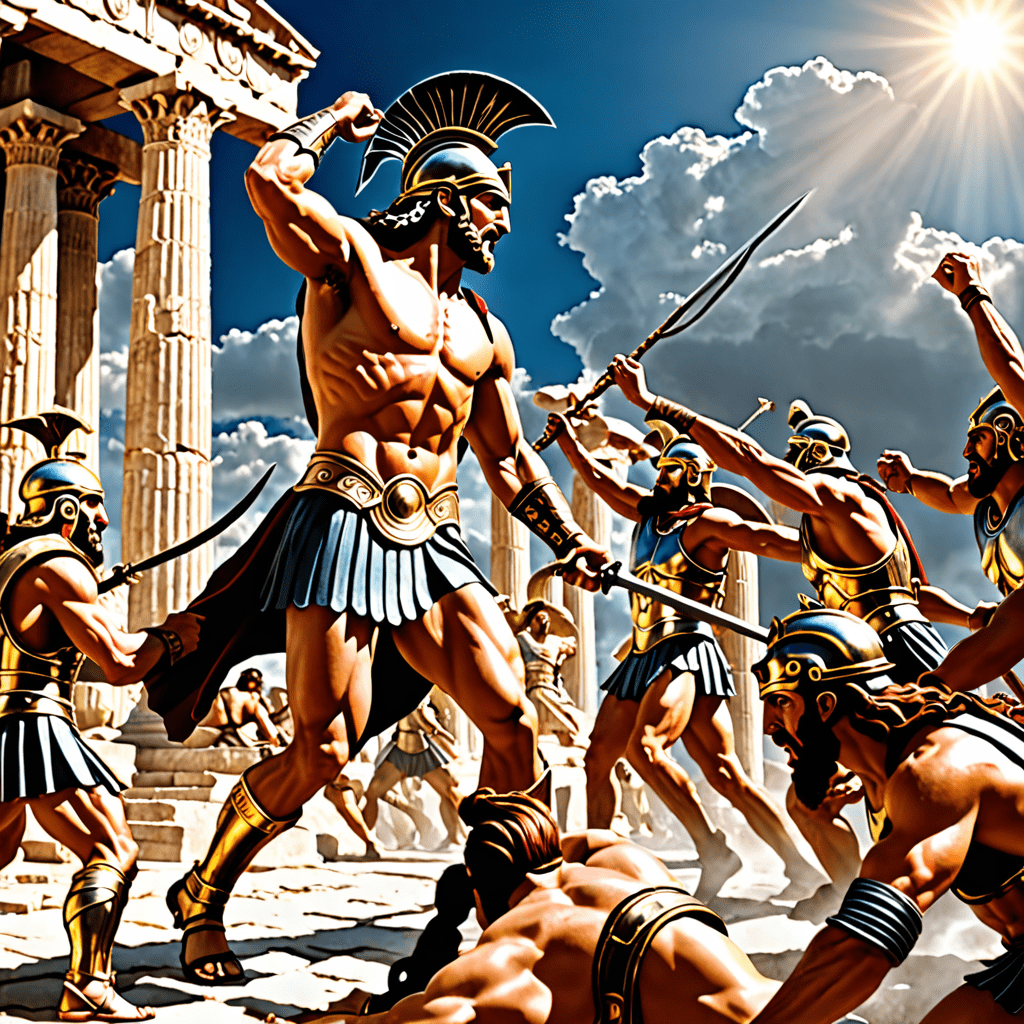The Heavenly Bamboo: A Symbol of Hope and Resilience
In the rich tapestry of Korean folklore, the Heavenly Bamboo stands as a powerful symbol of hope, resilience, and enduring spirit. This mythical plant, known for its vibrant green stalks and delicate, feathery leaves, holds a special place in the hearts and minds of the Korean people. The Heavenly Bamboo is more than just a plant; it embodies the enduring spirit of the Korean people, their unwavering belief in the power of nature, and their deep connection to the divine. The myth of the Heavenly Bamboo whispers of a time when the heavens touched the earth, leaving behind a legacy of strength, beauty, and eternal hope.
Origins of the Myth: The Heavenly Bamboo’s Arrival in Korea
The legend of the Heavenly Bamboo's arrival in Korea is a tale woven with both mythical and historical elements. It is said that long ago, during a time of great hardship and strife, the Korean people were struggling to survive. The land was barren, crops failed, and the people were faced with famine and despair. In this moment of deepest need, the heavens responded with a miraculous gift. A single stalk of bamboo, emanating a radiant glow, descended from the heavens and landed in the heart of the Korean peninsula. This celestial bamboo, imbued with divine energy, was the Heavenly Bamboo.
It is believed that the Heavenly Bamboo's arrival marked a turning point in Korean history. Its presence brought with it renewed hope, a sense of divine favor, and an assurance that even in the face of overwhelming adversity, there was still a chance for renewal and prosperity. The Heavenly Bamboo, with its resilience and strength, became a symbol of the Korean people's own ability to overcome hardships and flourish.
The Bamboo’s Divine Nature: A Gift from the Gods
The Heavenly Bamboo isn't just any ordinary bamboo; its divine origins are central to its significance in Korean folklore. Considered a gift from the gods, the Heavenly Bamboo possesses unique qualities that set it apart from all other plants. It is said to be imbued with mystical powers, capable of warding off evil spirits, bringing good fortune, and even possessing healing properties.
The plant's radiant glow, often described as a gentle, ethereal light, is believed to be a sign of its divine nature. It radiates an aura of peace and tranquility, symbolizing the divine presence that watches over the Korean people. This celestial glow is also said to symbolize the inherent goodness and resilience within every human being.
The Heavenly Bamboo’s Significance in Korean Folklore
The Heavenly Bamboo plays a prominent role in numerous Korean folktales and legends, often serving as a symbol of hope, resilience, and the strength of the human spirit. It appears in stories about overcoming hardships, finding love, and achieving success. The Heavenly Bamboo acts as a guiding force, offering encouragement and divine aid to those in need.
It is a reminder that even in the darkest times, there is always hope and the possibility of redemption. The presence of the Heavenly Bamboo in a story often signifies a turning point, a moment where fortunes change and dreams are realized.
The Bamboo’s Symbolism: Longevity, Prosperity, and Purity
The Heavenly Bamboo is also rich in symbolism. Its tall, slender stalks, symbolizing strength and longevity, represent the enduring spirit of the Korean people. The bamboo's rapid growth embodies prosperity and abundance, mirroring the Korean people's aspirations for a fulfilling and prosperous life. The bamboo's pure white flowers, which bloom only once in its lifetime, symbolize purity, innocence, and the cyclical nature of life.
The Heavenly Bamboo, with its multifaceted symbolism, serves as a constant reminder of the beauty, resilience, and potential that lies within each individual and within the Korean spirit.
The Heavenly Bamboo in Korean Art and Literature
The enduring power of the Heavenly Bamboo myth is evident in its presence throughout Korean art and literature. The plant's beauty and symbolism have inspired countless works across diverse artistic mediums. From ancient ceramics and intricate paintings to traditional folk songs and modern novels, the Heavenly Bamboo graces Korean culture with its grace and significance.
In traditional Korean painting, the Heavenly Bamboo frequently appears as a central motif, often portrayed alongside other auspicious symbols such as cranes, pine trees, and clouds. These paintings, known as "minhwa," often depict the Heavenly Bamboo in a stylized manner, highlighting its graceful curves and delicate leaves. The vibrant green color of the Heavenly Bamboo, representing vitality and growth, contrasts beautifully with the rich colors of traditional Korean art.
Korean literature also offers numerous examples of the Heavenly Bamboo's enduring influence. In folktales, the Heavenly Bamboo is often depicted as a symbol of hope and renewal, a reminder that even in the darkest of times, there is always the possibility of a brighter future. The Heavenly Bamboo also appears in poetry, where its beauty and symbolism are used to evoke emotions of awe, wonder, and resilience.
The Heavenly Bamboo as a Source of Healing Power
Beyond its symbolic significance, the Heavenly Bamboo is also believed to possess healing powers in Korean folklore. In traditional Korean herbal medicine, various parts of the bamboo are used to treat a range of ailments. The Heavenly Bamboo's roots, leaves, and stalks are believed to possess medicinal properties that can alleviate pain, reduce inflammation, and boost the immune system.
The myth surrounding the Heavenly Bamboo's healing properties is believed to have originated from the plant's remarkable resilience and adaptability. The bamboo's ability to thrive in various environments and withstand harsh conditions is seen as a testament to its inherent healing power. This belief in the Heavenly Bamboo's healing properties has been passed down through generations, highlighting the plant's enduring significance in Korean culture.
Theories on the Myth’s Origins: Natural Phenomena and Cultural Influences
The origin of the Heavenly Bamboo myth is a subject of ongoing debate and speculation. Some scholars believe that the myth originated from the observation of natural phenomena, such as the bamboo's rapid growth and resilience. The bamboo's ability to flourish in diverse environments and its rapid growth rate could have inspired the belief that it possessed mystical powers.
Other scholars suggest that the myth may have been influenced by cultural factors, such as the Korean people's deep reverence for nature and their belief in the power of the divine. The Heavenly Bamboo myth could be seen as a manifestation of these beliefs, embodying the Korean people's hope for a prosperous and harmonious existence.
The Heavenly Bamboo as a Manifestation of Korean Cultural Values
The Heavenly Bamboo myth is not merely a story; it is a reflection of the core values and beliefs of the Korean people. The Heavenly Bamboo embodies the Korean spirit of resilience, perseverance, and hope. Its strength and adaptability symbolize the Korean people's ability to overcome adversity and flourish in the face of challenges.
The Heavenly Bamboo's presence in Korean culture, from art and literature to traditional medicine, is a testament to its enduring significance. The myth serves as a powerful reminder of the importance of hope, resilience, and the enduring spirit of the Korean people.
The Enduring Legacy of the Heavenly Bamboo in Modern Korea
Although the Heavenly Bamboo remains a central figure in Korean folklore, its legacy extends far beyond the realm of myths and legends. In modern Korea, the Heavenly Bamboo continues to symbolize hope, resilience, and the enduring spirit of the Korean people.
The plant continues to be used for decorative purposes, adorning gardens, homes, and public spaces. Its slender stalks are incorporated into traditional Korean crafts, symbolizing strength and longevity. The Heavenly Bamboo's image also appears on various products, from clothing and jewelry to household items, serving as a reminder of the plant's enduring symbolism.
In modern Korea, the Heavenly Bamboo remains a source of inspiration and a symbol of national pride. Its enduring presence in the Korean cultural landscape is a testament to its power to inspire and uplift.
FAQ
What is the Heavenly Bamboo?
The Heavenly Bamboo is a mythical plant in Korean folklore that represents hope, resilience, and the enduring spirit of the Korean people. It is often portrayed as a bamboo stalk with vibrant green stalks and delicate, feathery leaves, and is said to have descended from the heavens during a time of hardship.
What are the symbolism associated with the Heavenly Bamboo?
The Heavenly Bamboo symbolizes various things. Its tall and slender stalks represent strength and longevity, while its rapid growth signifies prosperity and abundance. Its pure white flowers represent purity, innocence, and the cyclical nature of life.
What role does the Heavenly Bamboo play in Korean folklore?
The Heavenly Bamboo plays a prominent role in many Korean folktales and legends as a symbol of hope, resilience, and the strength of the human spirit. It often appears in stories about overcoming hardship, finding love, and achieving success.
What is the connection between the Heavenly Bamboo and Korean cultural values?
The Heavenly Bamboo embodies core Korean values such as resilience, perseverance, and hope. It symbolizes the Korean people's ability to overcome adversity and flourish in the face of challenges.
Where can I find the Heavenly Bamboo in modern Korea?
While the Heavenly Bamboo is a mythical plant, its legacy extends to modern Korea. You can find its image or symbolism in various aspects of Korean culture such as gardens, homes, public spaces, traditional crafts, and products.



